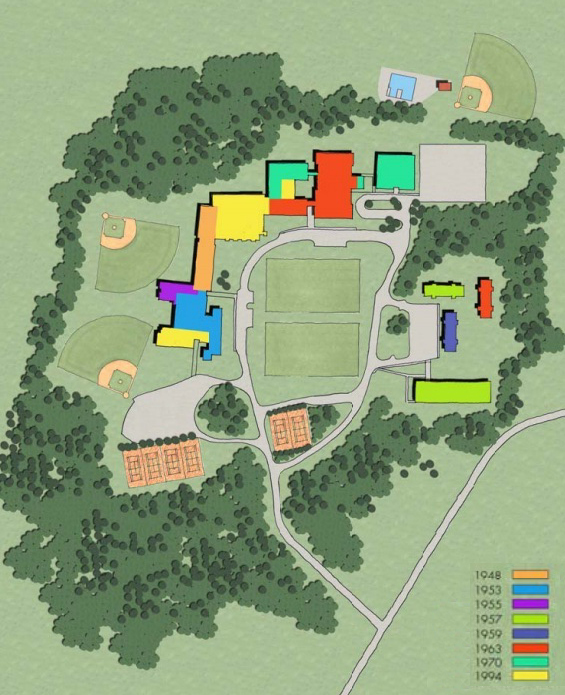
By Alice Waugh
The Campus Master Planning Committee (CMPC) has gotten a one-month extension on its original deadline of December 31 to finalize their report on options for configuring the Ballfield Road campus.
“It became apparent last week as we were working with LLB Architects, the project consultant, that we were rushing to the deadline because of the upcoming holidays,” CMPC Chair Carole Kasper said last week. “Instead of submitting a report that didn’t reflect the committee’s best effort, we requested the extension, and are grateful to the Board of Selectmen and the School Committee for their flexibility and understanding so that we may fully vet the report.”
LLB presented three examples of how the campus might be reconfigured to optimize traffic, parking and athletic field placement at the State of the Town meeting in November. On December 10, they presented a working draft of the final report that included cost estimates for those three campus configuration options that ranged from roughly $1.6 million to $2.5 million (see table below starting at line 3).
Eventually, the campus will also include a new community center on the Hartwell side and a substantially renovated school. However, the school project was thrown into further uncertainty last week by the Massachusetts School Building Authority’s (MSBA) refusal to consider funding part of the work for at least another year. Officials estimated last year that if MSBA funding came through, it would offset about 40 percent of the cost if Lincoln opted for a comprehensive school project totaling at least $47.6 million.
In late 2014, residents’ consensus on a “price point” for the town’s share of a school project was $35-$40 million. School Building Advisory Committee consultant Dore and Whittier gave estimates for an array of construction and renovation options costing anywhere from $12.2 million for basic repairs to $58.8 million with new cafeterias and kitchens, “neighborhood” and hub spaces, new second-grade classrooms, and other educational enhancements.
In spring 2015, Community Center Study Committee consultant Abacus Architects estimated that a community center would cost $10.4 million for the building alone.
All three campus elements (school, community center, and campus site work) could thus cost a total of $24.1 million if the least expensive options were chosen in every case, to $76.2 million for the most expensive options.
There is a bit of overlap between each of the two building projects and the campus work. For example, Abacus’s estimates included campus site work as well as creating a new entrance from Lincoln Road, which LLB Architects has since deemed unnecessary, and Dore and Whittier’s estimates for basic facilities work at the school incorporated paving, curbing and playing field improvements. Also, planning for both projects assumed that they would not overlap for educational purposes, a requirement for MSBA funding for the school.
| Campus Example A | Campus Example B | Campus Example C | ||
| 1. School Building* | $12.2 million – $58.8 million | N/A | N/A | N/A |
| 2. Community Center | $10.4 million – $15 million | N/A | N/A | N/A |
| 3. Site Components: | ||||
| – Athletic Fields | $510,000 | $965,000 | $775,000 | |
| – Roads | $415,000 | $650,000 | $813,000 | |
| – Parking | $500,000 | $500,000 | $750,000 | |
| – Sidewalks | $66,000 | $75,000 | $80,000 | |
| – Electrical | ?? | ?? | ?? | |
| Site Components (partial total)** | $1,491,600+ | $2,190,000+ | $2,418,000+ |
* The three categories of school options presented by Dore and Whittier a year ago included estimates for facilities work only ($12.2 million to $29 million); facilities plus some “a la carte” educational enhancements ($29.5 million to $47.6 million); or a comprehensive package of facilities and educational upgrades ($54.7 million to $58.8 million).
** Additional costs identified by LLB Architects include curbing at $23,000 to $140,000, depending on which material (asphalt, concrete, granite) is used, and electrical work. The consultant did not have updated cost estimates on December 10 for either burying the existing electrical service or replacing it underground.
Leave a Reply